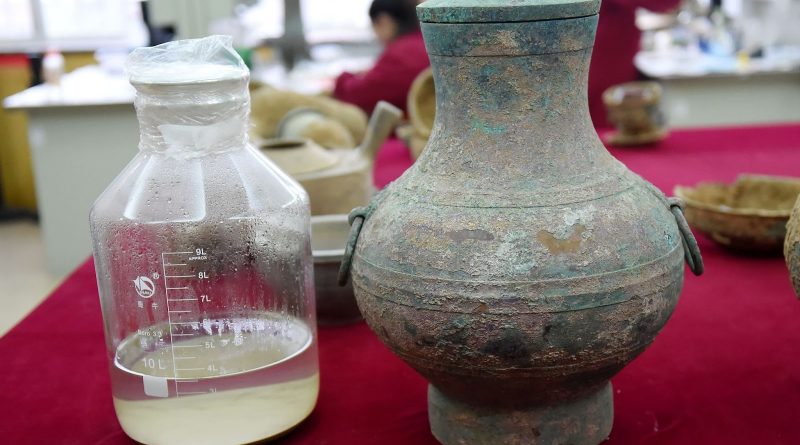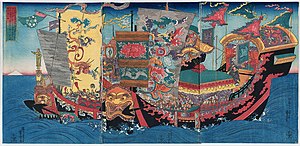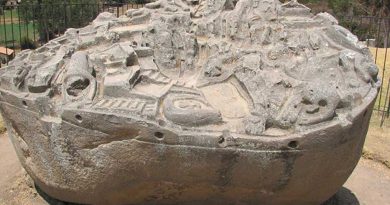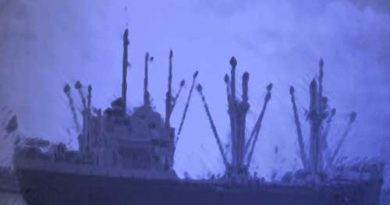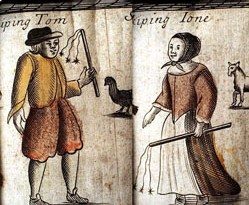“Elixir of Life” discovery in Chinese Tomb
The elixir of life, also known as elixir of immortality and sometimes equated with the philosopher’s stone, is a potion that supposedly grants the drinker eternal life and/or eternal youth. This elixir was also said to cure all diseases. Alchemists in various ages and cultures sought the means of formulating the elixir.
When archaeologists discovered 3.5 liters of fluid in a bronze vessel in a 2,000-year-old tomb in Luoyang, central China, last October, they thought it was wine. It was yellow and smelled of alcohol, similar in appearance and scent to rice wine. Other tombs dating to the Western Han Dynasty (202 B.C.- 8 A.D.) have been found to include rice or sorghum wine stored in elaborate bronze vessels and the alcohol was known to have played an important ritual role in funerary practices of the period.
This find was of particular note because so much of the liquid had survived. The pot-bellied bronze vessel’s lid was still in place, and the seal was firm enough to prevent its evaporation. Laboratory testing on the fluid has found that the preliminary identification of grain wine was incorrect. It is not alcohol of any kind. In fact it is a mixture of potassium nitrate and alunite, an aluminium potassium sulfate mineral. These are two ingredients that according to ancient Taoist texts could be used to create an elixir of immortality.
Waidan, meaning external elixir, was the earliest branch of Chinese alchemy, focusing on the achievement of immortality by combining metals and chemicals in a bronze crucible. There are surviving texts going back to the second century B.C. that describe the artificial creation of elixirs of life. Mercury and lead were the foundation of most formulae and it might seem ironic that they are both deadly poisons but it isn’t, really, because the power to end life was seen as the other side of their putative power to extend life.
Taiost literature records many nobles, even emperors, having died from elixir of life poisoning. Qin Shi Huang, the first emperor of a united China who was entombed with the great Terracotta Army in a mausoleum complete with rivers of mercury, is said to have been the first emperor to die (in 210 B.C.) from elixir poisoning. The last killed by the search for immortality was the Yongzheng Emperor in 1735.
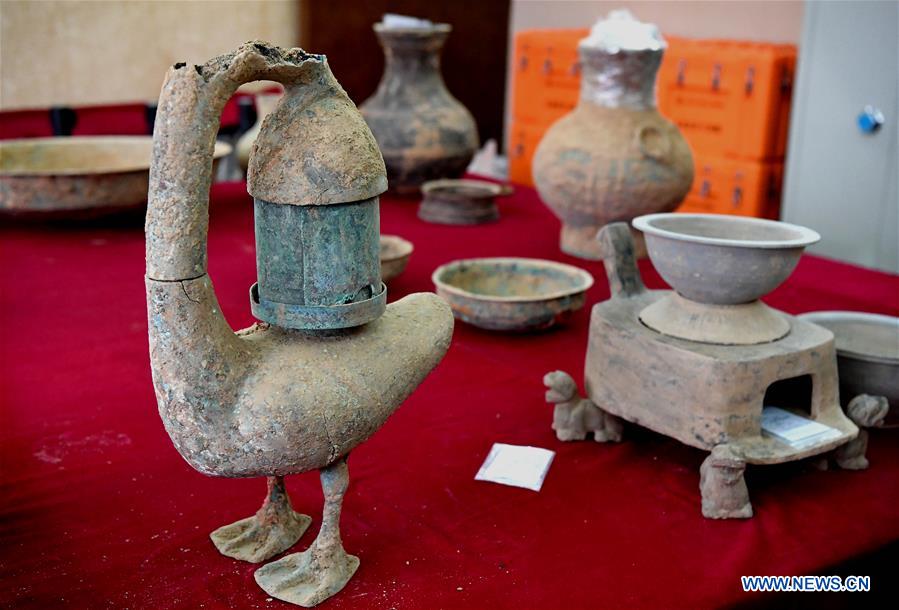
The elixirs themselves, despite their widespread popularity among the dead, are not often found in their resting places.
“It is the first time that mythical ‘immortality medicines’ have been found in China,” said Shi Jiazhen, head of the Institute of Cultural Relics and Archaeology in Luoyang.
“The liquid is of significant value for the study of ancient Chinese thoughts on achieving immortality and the evolution of Chinese civilization,” Shi added.
China
In ancient China, many emperors sought the fabled elixir with varying results. In the Qin Dynasty, Qin Shi Huang sent Taoist alchemist Xu Fu with 500 young men and 500 young women to the eastern seas to find the elixir, but he never came back (legend has it that he found Japan instead). When Shi Huang Di visited, he brought 3000 young girls and boys, but none of them ever returned.
The ancient Chinese believed that ingesting long-lasting precious substances such as jade, cinnabar or hematite would confer some of that longevity on the person who consumed them. Gold was considered particularly potent, as it was a non-tarnishing precious metal; the idea of potable or drinkable gold is found in China by the end of the third century BC. The most famous Chinese alchemical book, the Danjing yaojue (Essential Formulas of Alchemical Classics) attributed to Sun Simiao (c. 581 – c. 682 CE), a famous medical specialist respectfully called “King of Medicine” by later generations, discusses in detail the creation of elixirs for immortality (mercury, sulfur, and the salts of mercury and arsenic are prominent, and most are poisonous) as well as those for curing certain diseases and the fabrication of precious stones.
Many of these substances, far from contributing to longevity, were actively toxic and resulted in Chinese alchemical elixir poisoning. The Jiajing Emperor in the Ming Dynasty died from ingesting a lethal dosage of mercury in the supposed “Elixir of Life” conjured by alchemists.
India
Amrita, the elixir of life has been described in the Hindu scriptures (not to be confused with Amrit related to Sikh religion (see Amrit Sanskar)). Anybody who consumes even a tiniest portion of Amrit has been described to gain immortality. Legend has it that at early times when the inception of the world had just taken place, evil demons (Ashur) had gained strength. This was seen as a threat to the gods (Devas) who feared them. So these gods (including Indra, the god of sky, Vayu, the god of wind, and Agni, the god of fire) went to seek advice and help from the three primary gods according to the Hindus: Vishnu (the preserver), Brahma (the creator), and Shiva (the destroyer). They suggested that Amrit could only be gained from the samudra manthan (or churning of the ocean) for the ocean in its depths hid mysterious and secret objects. Vishnu agreed to take the form of a turtle on whose shell a huge mountain was placed. This mountain was used as a churning pole.
With the help of a Vasuki (mighty and long serpent, king of Nagloka) the churning process began at the surface. From one side the gods pulled the serpent, which had coiled itself around the mountain, and the demons pulled it from the other side. As the churning process required immense strength, hence the demons were persuaded to do the job—they agreed in return for a portion of Amrit. Finally with their combined efforts (of the gods and demons), Amrit emerged from the ocean depths. All the gods were offered the drink but the gods managed to trick the demons who did not get the holy drink.
The oldest Indian writings, the Vedas (Hindu sacred scriptures), contain the same hints of alchemy that are found in evidence from ancient China, namely vague references to a connection between gold and long life. Mercury, which was so vital to alchemy everywhere, is first mentioned in the 4th to 3rd century BC Arthashastra, about the same time it is encountered in China and in the West. Evidence of the idea of transmuting base metals to gold appears in 2nd to 5th century AD Buddhist texts, about the same time as in the West.
It is also possible that the alchemy of medicine and immortality came to China from India, or vice versa; in any case, for both cultures, gold-making appears to have been a minor concern, and medicine the major concern. But the elixir of immortality was of little importance in India (which had other avenues to immortality). The Indian elixirs were mineral remedies for specific diseases or, at the most, to promote long life.
Europe
In European alchemical tradition, the Elixir of Life is closely related to the creation of the philosopher’s stone. According to legend, certain alchemists have gained a reputation as creators of the elixir. These include Nicolas Flamel and St. Germain.
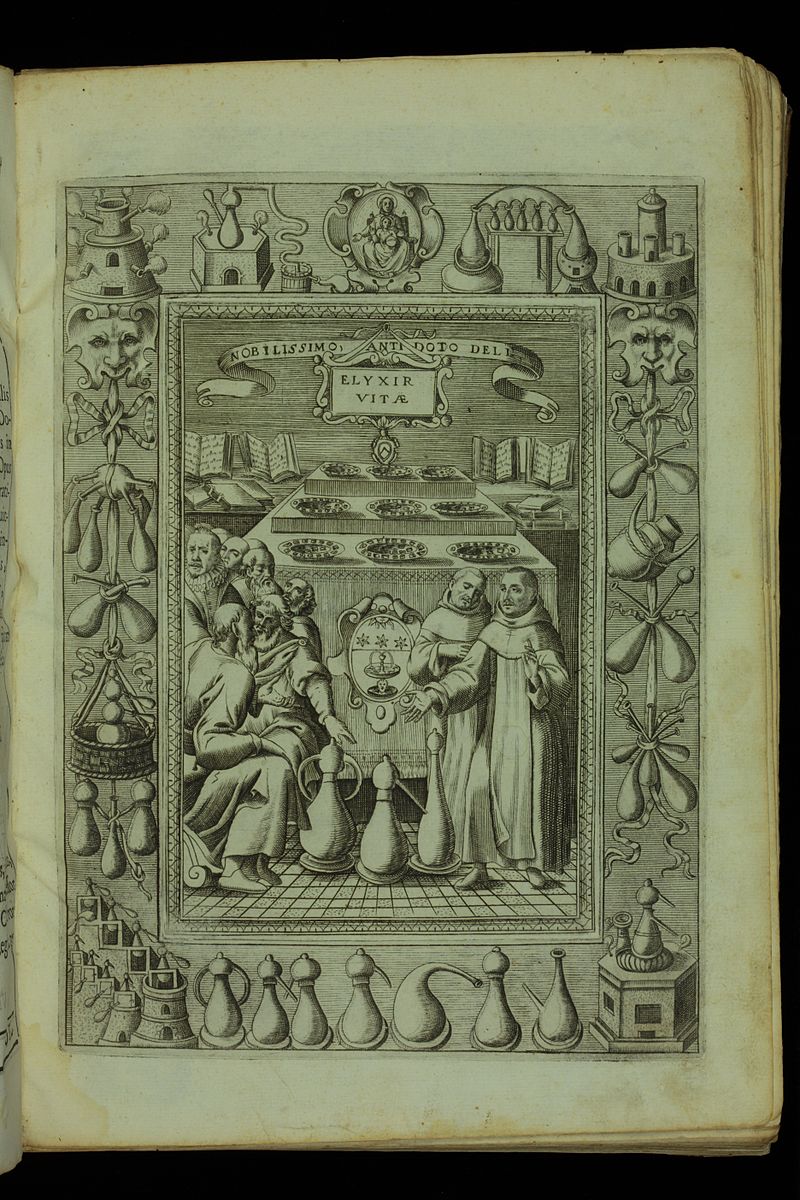
Japan
In the eight-century Man’yōshū, ‘waters of rejuvenation’ (変若水 ochimizu) are said to be in the possession of the moon god Tsukuyomi. Similarities have been noted with a folktale from the Ryukyu Islands, in which the moon god decides to give man the water of life (Miyako: sïlimizï), and serpents the water of death (sïnimizï). However, the person entrusted with carrying the pails down to Earth gets tired and takes a break, and a serpent bathes in the water of life, rendering it unusable. This is said to be why serpents can rejuvenate themselves each year by shedding their skin while men are doomed to die.
Names
The Elixir has had hundreds of names (one scholar of Chinese history reportedly found over 1,000 names for it), among them Amrit Ras or Amrita, Aab-i-Hayat, Maha Ras, Aab-Haiwan, Dancing Water, Chasma-i-Kausar, Mansarover or the Pool of Nectar, Philosopher’s stone, and Soma Ras. The word elixir was not used until the 7th century A.D. and derives from the Arabic name for miracle substances, “al iksir”. Some view it as a metaphor for the spirit of God (e.g., Jesus’s reference to “the Water of Life” or “the Fountain of Life”). “But whoever drinks the water I give him will never thirst. Indeed, the water I give him will become in him a spring of water welling up to eternal life.” (John 4:14) The Scots and the Irish adopted the name for their “liquid gold”: the Gaelic name for whiskey is uisce beatha, or water of life.
Aab-i-Hayat is Persian and means “water of life”. “Chashma-i-Kausar” (not “hasma”) is the “Fountain of Bounty”, which Muslims believe to be located in Paradise. As for the Indian names, “Amrit Ras” means “immortality juice”, “Maha Ras” means “great juice”, and “Soma Ras” means “juice of Soma”. Later, Soma came to mean the moon. “Ras” later came to mean “sacred mood experienced listening to poetry or music”; there are altogether nine of them. Mansarovar, the “mind lake” is the holy lake at the foot of Mt. Kailash in Tibet, close to the source of the Ganges.
